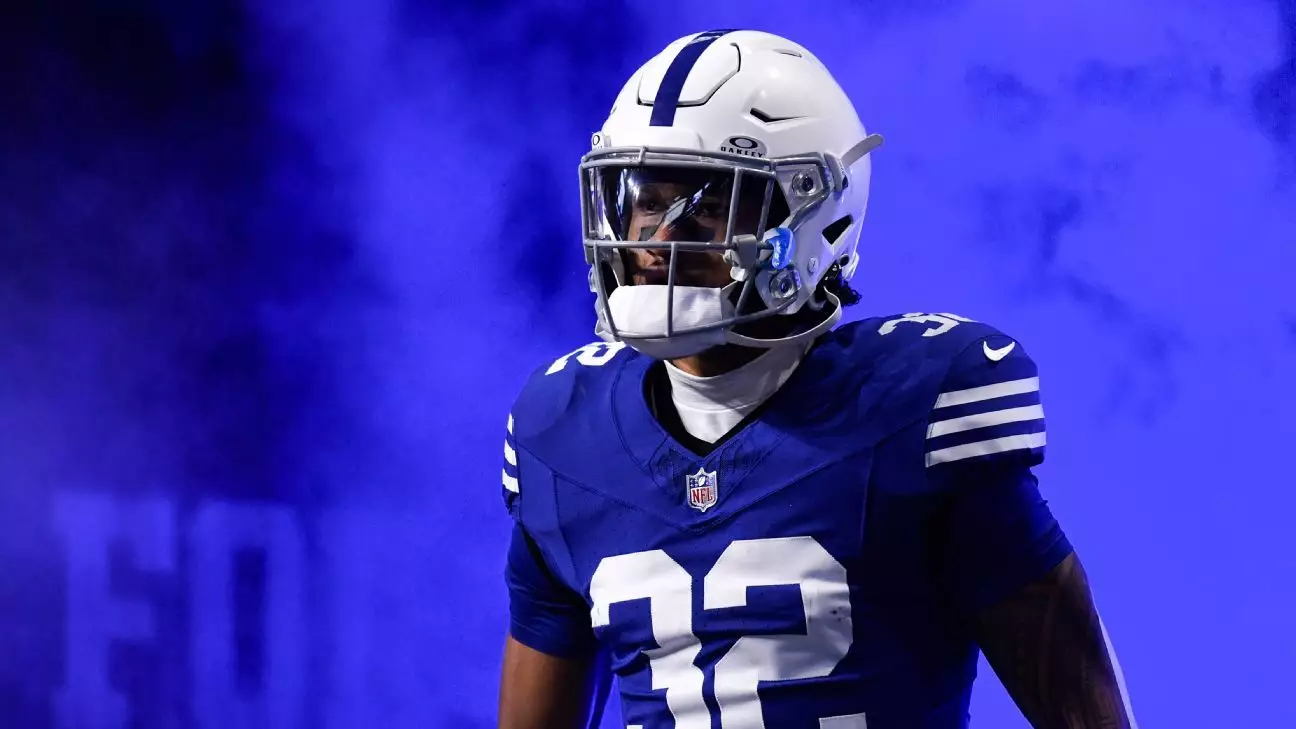In the ever-competitive landscape of the NFL, the New Orleans Saints are proving that effective roster management is more than just filling spots — it’s about orchestrating a transformation. The recent efforts to sign Julian Blackmon encapsulate this mindset. Caught amid the tumult of roster turnover, the Saints are not merely replacing Tyrann Mathieu—they are shaping a versatile secondary capable of adapting to modern offensive challenges. Blackmon’s potential arrival signifies more than just a stopgap; it represents a calculated move to infuse youth, talent, and strategic flexibility into a defense eager to reclaim its former prowess.
This approach reveals a franchise that understands the critical importance of defensive adaptability. The Saints, under new defensive coordinator Brandon Staley, aren’t just adding players—they’re constructing a system that prioritizes diversified skills. Blackmon’s multi-faceted experience, transitioning between cornerback and safety roles during his college days and professional career, makes him an intriguing piece of this puzzle. His ability to excel in different safety roles underscores the team’s desire to craft a defense that’s not static but fluid, capable of shifting strategies based on game flow and opponent strengths.
Learning From the Past, Building for the Future
Blackmon’s career trajectory is a testament to resilience and potential. Despite setbacks, including a significant shoulder injury, he managed to play 16 games last season, snagging three interceptions and making 86 tackles—statistics that demonstrate his impact when healthy. While injuries have hampered his progress, his overall talent remains evident, and his absence from the market last offseason was more about circumstance than capability.
The Saints are clearly betting on Blackmon’s upside. With a cap space of approximately $23.8 million before Mathieu’s departure, Ramsey’s signing could be more than a transaction—it could be a statement of intent. By targeting a player with proven versatility and a track record of impactful play, New Orleans signals that it’s serious about evolving its secondary into a cohesive, formidable unit.
Simultaneously, the Saints are navigating a phase of significant transition. The loss of veteran stars like Marshon Lattimore and Paulson Adebo leaves a youthful core that necessitates grooming and development. The signing of players like J.T. Gray, Terrell Burgess, and Ugo Amadi illustrates an emphasis on building depth and experience, though the team’s dominant focus remains on elevating their safety game.
Strategic Rebuilding in a Competitive Division
The decision to pursue Blackmon isn’t made in isolation; it’s part of a broader, bold strategy. The NFC South is a division marked by offensive firepower and strategic ingenuity. To keep pace, the Saints recognize the necessity of a resilient secondary standing firm against high-octane offenses. The departure of Mathieu, a veteran leader, tests the team’s ability to maintain defensive integrity, but it also provides an opportunity for younger players to step up.
Head coach Kellen Moore’s emphasis on adaptability underscores the team’s commitment to tactical evolution. The shift from a reliance on experienced veterans to fostering emerging talent indicates an understanding that sustainable success hinges on flexible defense that can respond to diverse offensive schemes. Blackmon’s skill set and past performance align with this philosophy—his ability to read plays, cover receivers, and contribute to run-stopping efforts makes him a strategic asset in this rebuilding phase.
The team’s financial flexibility further supports this vision. With significant cap space already available, the Saints possess the leverage to negotiate a deal with Blackmon that aligns with their roster-building ambitions. This move isn’t just about patching a hole; it’s a statement that the Saints are positioning themselves to be tougher, more adaptable, and more unpredictable in the season ahead.
The Promise of Unfinished Business
Blackmon’s story is one of unfulfilled potential caught in the shadows of injury and circumstance. His journey underscores the importance of perseverance in a sport dominated by fleeting opportunities and high stakes. His role in the Saints’ defense isn’t merely a matter of filling a need—it’s a chance for him to reassert his talent and for the Saints to transform their backline into a dynamic, disruptive force.
This pursuit is emblematic of a franchise that values strategic foresight and aggressive rebuilding. By acquiring a versatile defender like Blackmon, the Saints are sending a clear message: they’re committed to not just competing, but contending. The secondary will be a key battleground in 2024, and the ability of this unit to adapt, develop, and elevate will determine how far the Saints can go in their quest for defensive excellence.


Leave a Reply